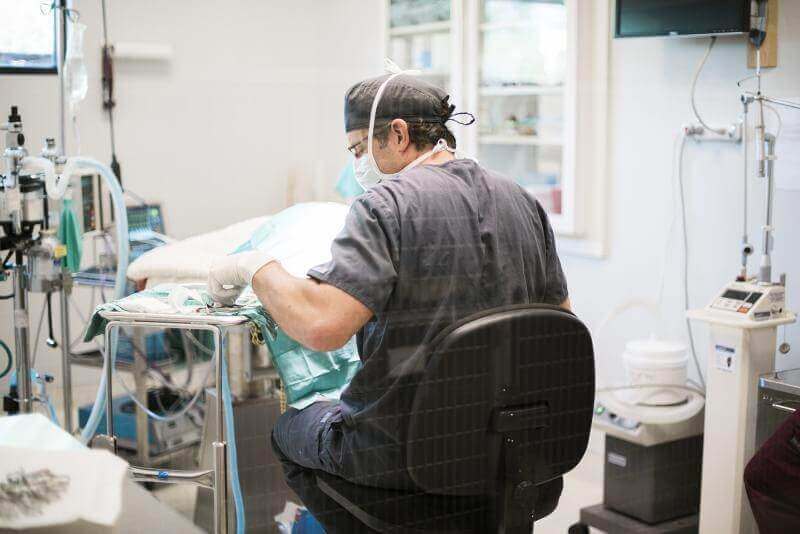
Veterinary surgery involves anesthetizing your dog or cat, and then surgically incising into their body to remove or repair tissues or organs that are diseased or injured.
While a lifesaving procedure, veterinary surgery is accompanied by potential danger as well. For this reason, the veterinarians and staff at Seven Hills Veterinary Hospital always follow the strict safety guidelines dictated by the American Animal Hospital Association, as well as continually seek newer and safer surgical equipment and procedures to use on your pet.
Surgical and many non-surgical processes require that your dog or cat be anesthetized for his or her protection and comfort. While routine and generally safe, we always adhere to the AAHA anesthetic protocols to ensure that your dog or cat will remain safe while under anesthetic. The AAHA guidelines require that we first do blood work and, depending upon your pet's overall health, other tests to ensure your pet will not be put at risk while anesthetized.
From the time we begin to administer the anesthesia until your pet regains consciousness following the surgery, a trained veterinary technician continuously monitors his or her vital signs.
Great advances have been made in veterinary surgery in recent decades and these have resulted in safer, less invasive procedures, with less post-surgical pain and faster recovery for pets.
New surgical technologies we use include:
- Endoscopy —The insertion of a thin, flexible tube into one of the animal's orifices to examine the inner linings of the intestinal or respiratory tracts.
- Laparoscopic surgery —Surgery involving the cutting of a small hole and inserting a tiny camera that guides the surgeon as he operates.
- Laser surgery —Surgery using a laser beam instead of a knife for cutting.
Our veterinarians and veterinary staff embrace new technology by continually investing in the new equipment and training necessary to be able to provide your pet with the highest quality care.
